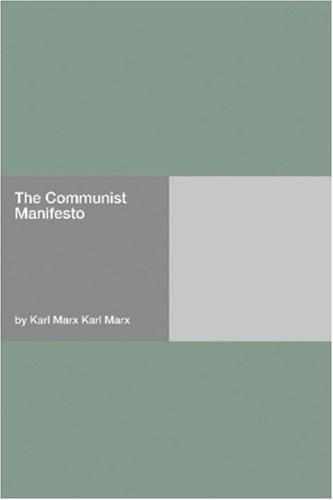The Communist Manifesto: A Comprehensive Overview
Explore the history, ideas and modern relevance of Karl Marx and Friedrich Engels' The Communist Manifesto in this concise 800-word overview.

Introduction to The Communist Manifesto
First published in 1848, The Communist Manifesto by Karl Marx and Friedrich Engels is one of the most influential political documents ever written. In fewer than 12,000 words, it laid out a revolutionary theory of history, a critique of capitalism, and a rallying cry for workers of the world to unite. Despite being rooted in the upheavals of nineteenth-century Europe, the pamphlet continues to shape debates on economics, class, and social justice. This article offers an 800-word exploration of the Manifesto’s background, content, impact, and contemporary relevance.
Historical Context and Purpose
The Communist Manifesto emerged from a Europe convulsed by industrialization, rapid urban growth, and political unrest. Factories replaced cottage workshops, drawing masses of workers—many living in grim conditions—into new cities. In England and Germany, child labor, low wages, and unsafe workplaces were common. Amid this turmoil, socialist study circles spread across the continent. Marx and Engels, commissioned by the London-based Communist League, set out to distill diverse radical ideas into a clear, compelling program that could be readily translated and distributed. Their purpose was practical as much as theoretical: to provide a guide for revolutionary action and to clarify the League’s aims before the anticipated wave of 1848 revolutions.
Key Themes and Arguments
Class struggle as the engine of history. The Manifesto famously opens by declaring that “the history of all hitherto existing society is the history of class struggles.” Marx and Engels argued that every epoch is defined by conflict between oppressor and oppressed classes—be it slave and master, lord and serf, or bourgeoisie and proletariat. This recurring battle, they contended, propels societies from one mode of production to the next.
The rise of the bourgeoisie and capitalism. The authors celebrate, yet critique, the bourgeoisie for revolutionizing production and globalizing trade. Capitalism shattered feudal bonds, unleashed technological innovation, and created unprecedented wealth. However, it also produced exploitation, crises of overproduction, and alienation for wage laborers who owned no means of production.
The revolutionary role of the proletariat. Unlike earlier oppressed classes, the proletariat is large, interconnected, and concentrated in factories, making it uniquely capable of collective action. Marx and Engels predicted that workers, driven by worsening conditions and equipped with newfound solidarity, would overthrow the bourgeois order and establish a classless society.
Abolition of private property and class. The authors called for the elimination of bourgeois private property—meaning capital that enables exploitation—and for communal ownership of the means of production. They argued that ending class distinctions would also dissolve the state as an instrument of class rule.
Structure and Literary Style
The Manifesto is divided into a preamble and four concise chapters. The preamble grabs the reader with the iconic line “A spectre is haunting Europe,” instantly framing communism as a force both feared and inevitable. Chapter I outlines the materialist conception of history and the rise of capitalism. Chapter II details communist goals and counters common objections. Chapter III critiques rival socialist schools, while Chapter IV sketches the international nature of the proletarian movement. The language is vivid, polemical, and poetic, designed to inspire agitation rather than academic reflection.
Global Impact and Legacy
Although the 1848 revolutions failed to install communist governments, the Manifesto took on new life with the rise of mass labor parties. Translated into scores of languages, it became a touchstone for movements from the Russian Revolution of 1917 to anti-colonial struggles in Asia, Africa, and Latin America. Soviet leaders treated it as canonical scripture, while Western democracies grappled with its critiques through social-welfare reforms. Even opponents acknowledged its prescience: the text anticipated globalization, monopolization, and the volatility of capitalist cycles—phenomena visible in today’s interconnected markets.
Criticisms and Misconceptions
Determinism. Critics argue that Marx and Engels overstated the inevitability of proletarian victory. Historical outcomes have proven far messier, with class alliances crossing economic lines and technological advances reshaping labor dynamics.
Neglect of individual rights. Some claim the manifesto’s focus on collective ownership sidelines personal liberty. Marxists respond that true freedom requires material security, not merely formal legal rights.
Association with authoritarian regimes. Detractors equate the Manifesto with later totalitarian states. However, Marx and Engels envisaged a withering away of the state, not an omnipresent bureaucracy. The gap between theory and practice remains a central debate in socialist discourse.
Modern Relevance
Gig-economy workers, rising income inequality, and debates over automation lend renewed urgency to the Manifesto’s critique of exploitation. Grass-roots movements advocating unionization at tech giants echo its call for solidarity. Environmentalists also find value in its systemic analysis: capitalism’s relentless pursuit of profit is linked to ecological degradation, prompting some to advocate eco-socialist models. Meanwhile, policy conversations about wealth taxes, universal basic income, and cooperative ownership borrow vocabulary—if not full prescriptions—from Marxian analysis. Whether embraced or rejected, the Manifesto offers a lens to interrogate power structures in the twenty-first century.
Conclusion
One hundred seventy-five years after its publication, The Communist Manifesto remains a lightning rod for controversy and a wellspring of inspiration. Its bold claims invite readers to question entrenched hierarchies, envision alternatives, and consider the ethical dimensions of economic life. Understanding the pamphlet—its context, arguments, and legacy—equips us to engage more thoughtfully with the enduring questions of inequality, democracy, and collective action.
